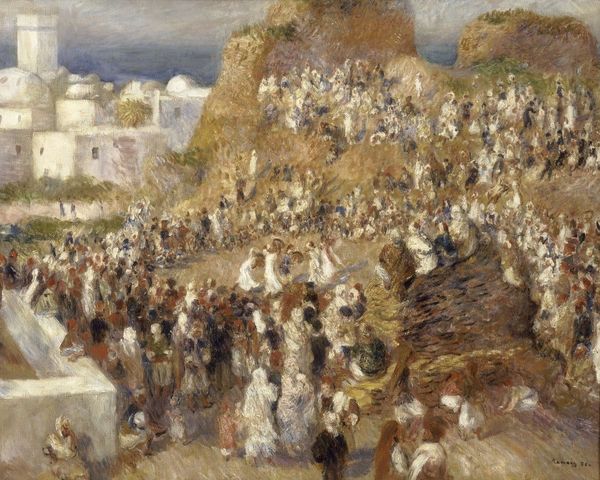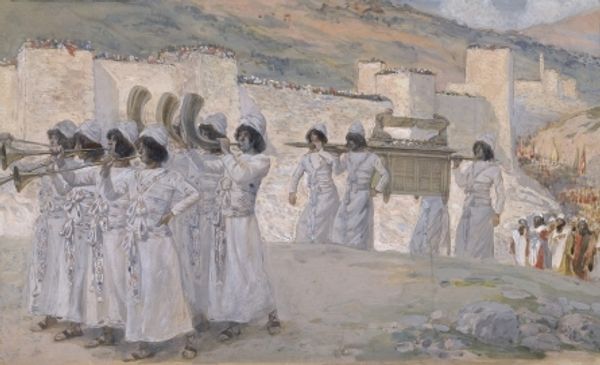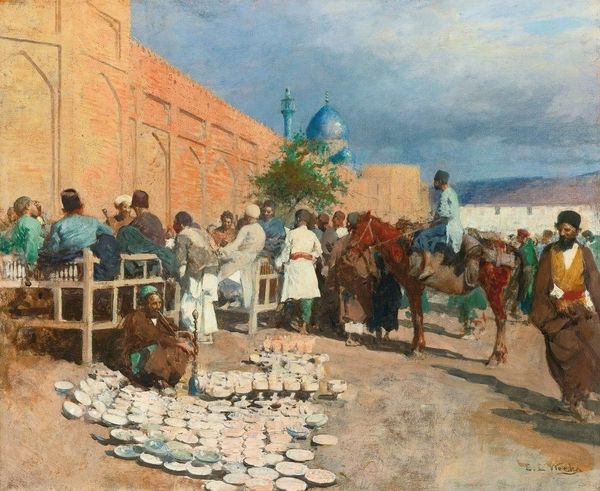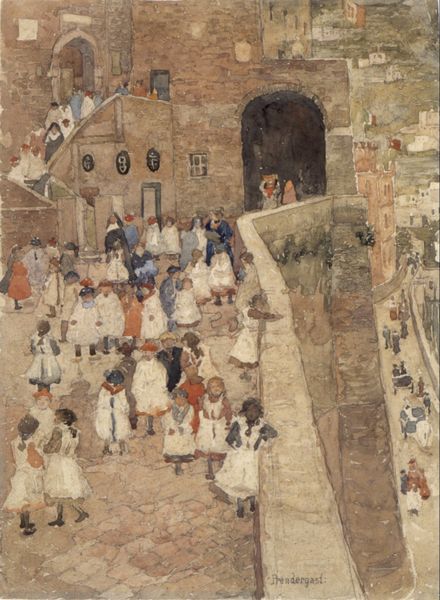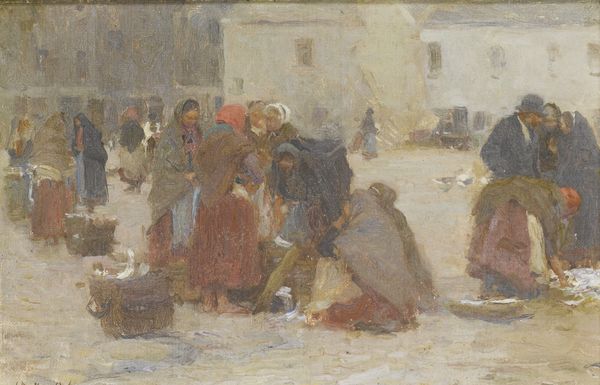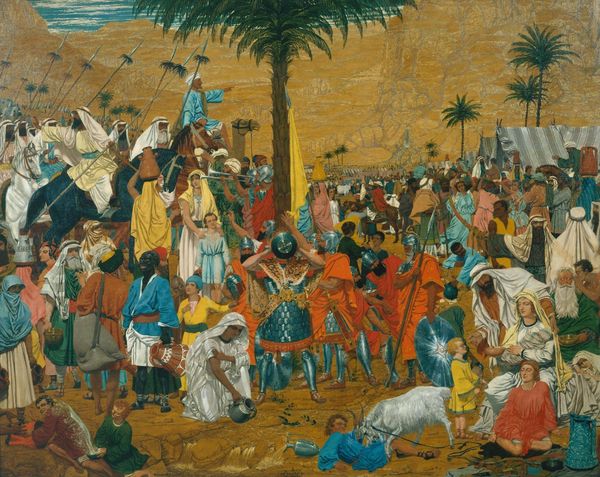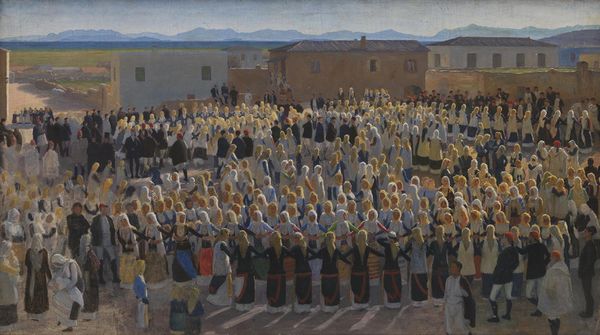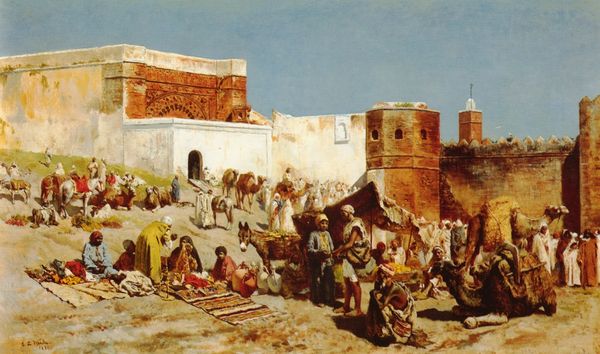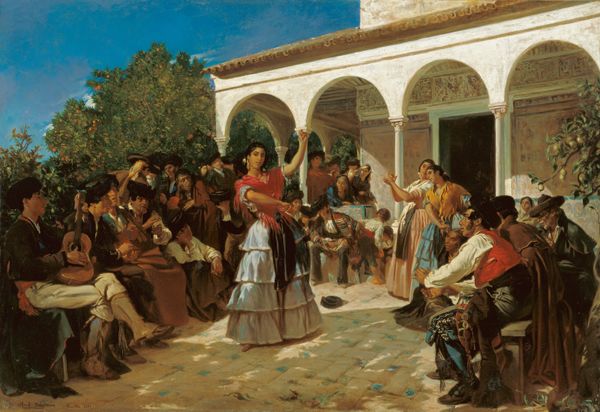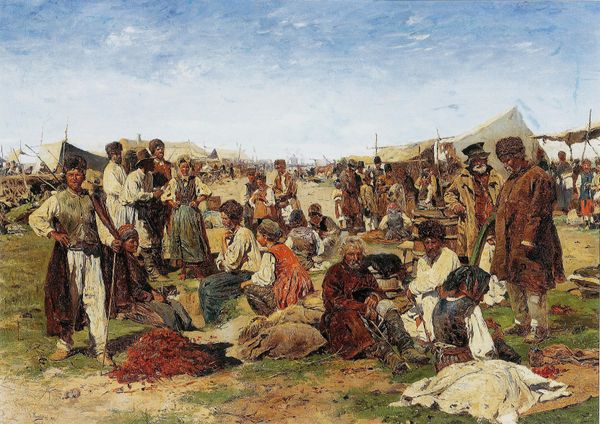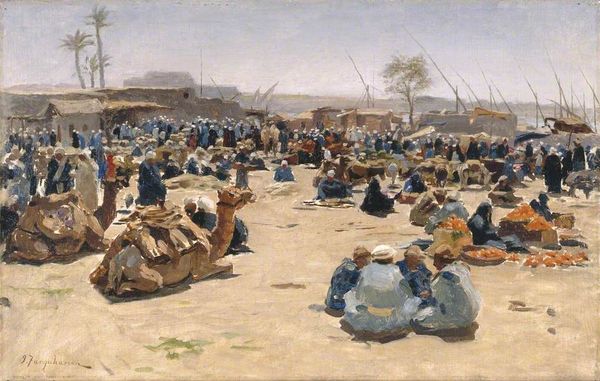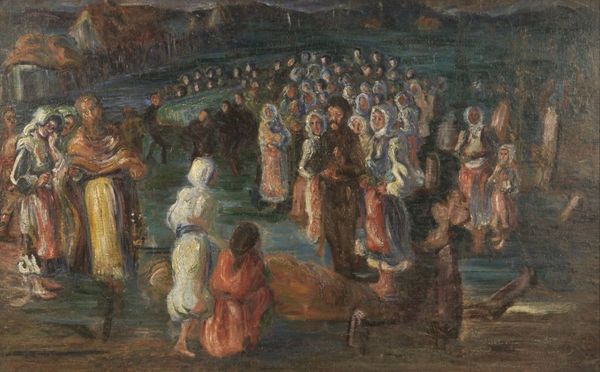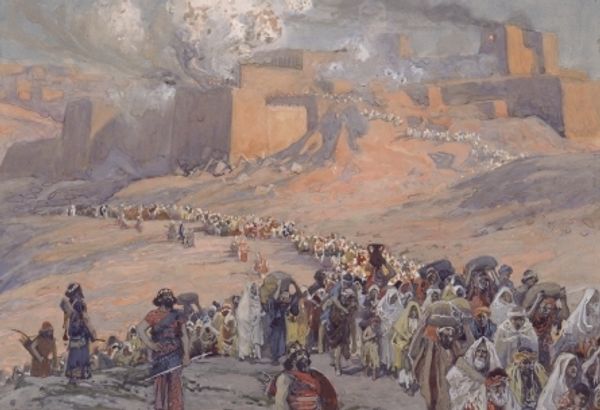
Dimensions: 59.5 cm (height) x 90 cm (width) (Netto)
Editor: This is *Kvindedansen i Megara*, or Women's Dance in Megara, painted by Niels Skovgaard in 1897. It seems to capture a moment of joyful communal celebration. What do you see in this piece? Curator: I see a powerful expression of cultural identity preserved through ritual. The circular dance, performed outdoors and bathed in the light of day, evokes ancient traditions of connection to the earth and community. Do you notice how the architecture seems almost secondary to the human activity? Editor: Yes, the buildings almost blend into the background. The dancers are definitely the main focus. What does this specific dance mean, though? Is there a symbolic importance attached to it? Curator: Likely yes. These communal dances in rural settings serve as vessels of collective memory, transferring cultural values and social bonds from one generation to the next. The hand-holding symbolizes unity and shared heritage, visually enacting cohesion and cultural belonging, even resistance to external cultural change. Think about what visual signals—perhaps repeated colours or gestures—create those ties that bind. Editor: So, it’s not just a dance, but a way of maintaining a cultural identity? Curator: Precisely. Through such symbolic gestures, a community asserts its unique place in the world and affirms its cultural continuity across time. Can you identify visual components of the painting which signal specific community details? Editor: I see many people wearing specific types of clothes… That makes sense! I'll have to look closer. Thank you! Curator: And I thank you for noticing those crucial signals of identity, consciously enacted.
Comments
No comments
Be the first to comment and join the conversation on the ultimate creative platform.
